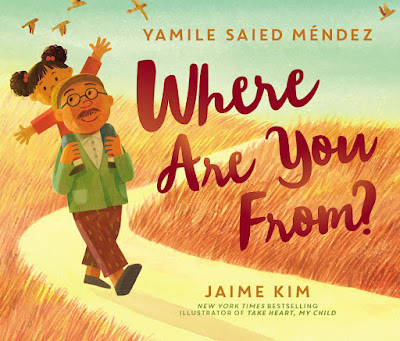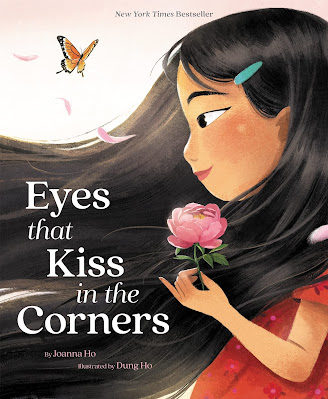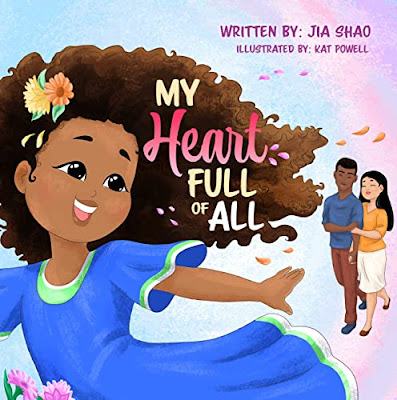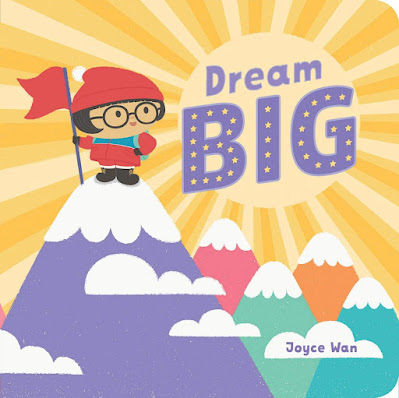I was today year's old when I learned that April 2 is National Children's Book Day. Apparently, this day to commemorate and promote children's books, set on Hans Christian Anderson's birthday (get it), has been a thing since before I was born. Now, I know that every day is some kind of national something, but this one happens to be really cool, so I'm going with it. This week, the high school creative writing club I sponsor will be celebrating by reading their favorite children's books and eating appropriate snacks, although I'm not sure Target has a section for that, or at least I didn't see any signs. It might just end up being a lot of Peeps and Cadbury Eggs. We'll also devote some time to a short tutorial on what makes a good children's book, and how to get theirs published.
Today, however, I'm sharing my favorite children's books, specifically with mixed and blended families in mind.
First, some caveats, a few provisos, a couple of quid pro quos. Needless to say, this is not an exhaustive list, so if you think that I've left an important book off the list, feel free to mention it in the comments and hype the book yourself. I'm always looking for recommendations. The following is just a list of my favorites, in no particular order, from the books that I read to my kids with our special family in mind. And with all the legal stuff out of the way, here we go!
The Day You Begin, written by Jacqueline Woodson and illustrated by Rafael López
We actually own the Spanish translation of this book, because we bought it for my daughter who's in the Spanish Immersion program at school, and somehow that adds a different flavor to the reading. Either way, this beautiful book is about three kids of different ethnicities who each feel left out sometimes, or afraid to share the details of their lives for fear that they won't be accepted, often with reason. One of my favorite moments is at lunchtime. One girl turns up her nose as she looks into another girl's lunch of rice and kimchi. The Asian girl notices the disdain, obviously, and while she feels insulted by her friend's reaction, she also has enough sense to wonder how the girl doesn't know that most of the world eats rice, literally for almost every meal. In the end, the three students who feel like outsiders become friends and find their similarities not only bind hem together, but also embolden them to share their lives with the class.
Where Are You From? written Yamile Saied Méndez and illustrated by Jaime Kim
A lot of mixed kids and the children of immigrants often deal with the question "where are you from?" in a very skeptical or derogatory way. And, of course, the equally cringe follow-up question, "but where are you really from?" This book starts with a child confused by the question at school, from grownups as well as kids. Troubled by the idea that she doesn't belong, she asks her grandfather, because he knows everything. Grandfather tells her the rich history of their family, sometimes beautiful, sometimes sad, in the Caribbean and Latin America as well as the US. In the end, grandfather tells the girl that where she really comes from is his heart, and from the dreams of all her ancestors. It's a brilliant way to deal with the question that our kids inevitably face, in a way that unpacks the complexity of it in a way that "I'm from here, just like you" doesn't accomplish.
Eyes That Kiss in the Corners, written by Joanna Ho and illustrated by Dung Ho
Another beautiful book, this time with vibrant illustrations of Asian culture, Eyes That Kiss in the Corners deals with the issue of looking different from the majority of kids around you. What sets this book apart from some of the others is that it's pure affirmation. It contains no moments of racial conflict, but instead celebrates the main character's beauty. The Asian girl at the center of the book loves her eyes, loves seeing them in all the generations of women in her family, loves how they remind her of the history and folklore of her Chinese culture, from the dragon dance to the figures of mythology. The art style complements the concept of the book and the lyrical text perfectly. It's a great book to get your child talking about the parts of them that they may need to love a little more.
My Heart Full of All, written by Jia Shao and illustrated by Kat Powell
This book actually has a mixed family at the center, and deals with that issue a little more directly. In the story, a girl whose mother is Chinese and whose father is African wants to put on fashion show with her dolls. Every time she adds a detail to her doll's attire for the show, it comes from a different side of her family - a different tradition, memory, or some place they've travelled together. The doll's hair texture is like her own and her father's, pulled into two puffs. The dress is like her mother's fancy one for Chinese New Year. By the end, the doll has little nuances from so many different cultures and ethnicities, just like the child herself. It's a very fun book, written in rhyme, and very interactive, with space at the end for reflecting on culture and even drawing an original henna tattoo.
Dream Big, written and illustrated by Joyce Wan
This is a bit of an odd choice for this list, since it's not specifically written about mixed families or even families in general. Instead, it's about girls dreaming big and connecting their aspirations for the future to famous women of all walks of life, from Harriet Tubman to Frida Kahlo. What makes me put it on the list is the way my three-year-old really gets into every panel, talking about what each of the women are doing, and especially the last image of so many women all in one scene, doing everything from running to climbing mountains to flying planes and helicopters. When we get to that part, with so many different women, she likes to point to the ones that look like her mother, her sisters, her grandmothers and aunties, and her friends. She even picks one that she says looks like me, and I try to take as a compliment, in the spirit in which I'm sure it's given. Best of all, when asked which girl looks like herself, she points to all of them. "This me, this me, this me, this me," she says. If Wan was hoping that little girls would see themselves reflected in a diversity of women, she definitely succeeded in my house.
So, those are just five of my favorite children's books that I've bought specifically to help my kids think about their mixed family, but there are a lot more good ones out there that I didn't mention, and, I'm sure, a lot more that I don't even know about. In Florida, where I live, many of these books might be pulled from the elementary shelves, soon if not already, so let's hype them up while we can. If you have a favorite, please drop the title in the mentions and tell everyone why you like it.





No comments:
Post a Comment